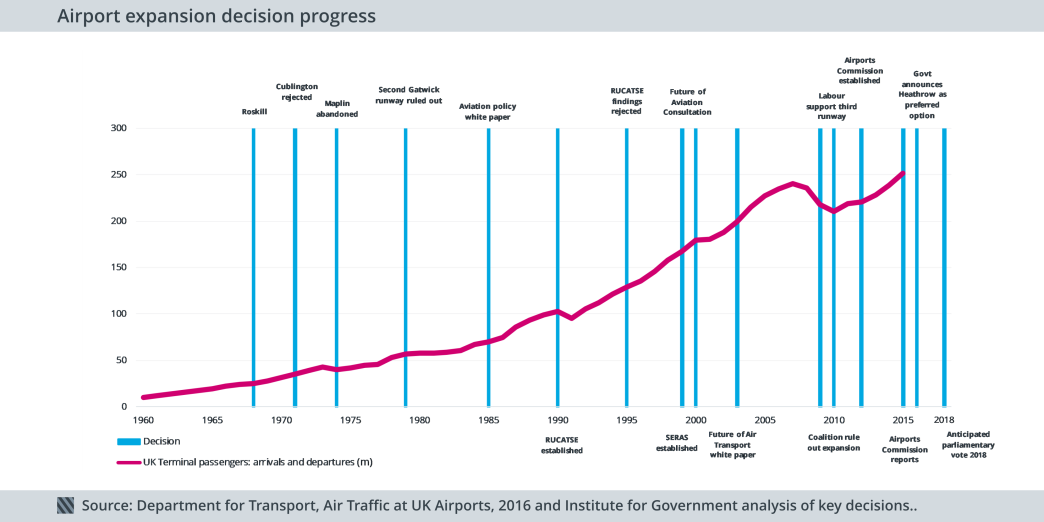New government forecasts suggest that an extra runway at Gatwick Airport would be more beneficial than one at Heathrow. But these new forecasts are creating yet another delay in what is essentially a political decision, argues Nick Davies.
The new analysis from the Department for Transport (DfT) on South East airport expansion shows the enduring wisdom of the adage that it’s difficult to make predictions, especially about the future.
Don’t read too much into long-term forecasts
The analysis provides updated forecasts for the potential benefits of Heathrow and Gatwick expansion schemes all the way to 2084/5. As shown in the table below, these have changed quite significantly since the Airports Commission reported two years ago.
The estimated benefits of new runways at both airports have increased, in the case of the Gatwick by more than 40%. As a result, a second runway at Gatwick now appears to provide better value for money.
Monetised impact of airport expansion proposals (present value, £bn, 2014 prices)
|
Gatwick second runway (Airports Commission 2015) |
Gatwick second runway (DfT analysis 2017) |
Heathrow third runway (Airports Commission 2015) |
Heathrow third runway (DfT analysis 2017) |
|
|---|---|---|---|---|
| Total benefits to passengers and the wider economy | 52.4 to 53.7 | 74.1 to 75.3 | 59.2 to 61.1 | 72.8 to 74.2 |
| Net present value | 3.1 to 4.5 | 0.5 to 1.9 | 0.2 to 6.1 | -3.1 to 2.3 |
| Net public value | 50.3 to 52.2 | 72.6 to 74.4 | 53.1 to 58.4 | 67.8 to 72.6 |
Source: Department for Transport, Updated Appraisal Report: Airport Capacity in the South East, October 2017
In our report How to value infrastructure, we argue that cost benefit analysis is a decision-support rather than a decision-making tool. We also argue it’s also important not to ascribe spurious accuracy to long-term forecasts. A few billion pounds may seem like a lot, but spread over 70 years – and given how much forecasts change – it’s not a meaningful difference. Both options would deliver broadly similar benefits. Further evidence is unlikely to change this significantly. What matters now is politics.
This is only the latest in a long history of delays on South East airport expansion
It is exactly a year to the day since the Government announced that a third runway at Heathrow was its preferred option for airport expansion in the South East. Yet a final vote in Parliament is now not due until the first half of 2018, following a consultation on a new draft Airports National Policy Statement.
Given that the question of airport expansion in the South East has been in a holding pattern for half a century, only a brave person would bet that a green light for landing will finally be granted next year.

The delay is not surprising. Big infrastructure projects like this tend to have diffuse benefits and concentrated costs, creating small groups of highly vocal ‘losers’ who are likely to oppose projects. When these groups are in the constituencies of senior ministers – as they are for Boris Johnson and Justine Greening – the politics becomes challenging.
The more traditional approaches to public engagement used on this issue to date – enquiries and formal consultations – have clearly failed to generate the consensus the Government wants. Better public engagement could cut through this type of stalemate, something we look at in a forthcoming Institute for Government report, out in December.